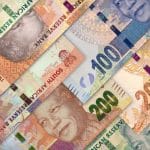- The South African Rand has been badky hit this morning as renewed power cuts by Eskom in South Africa take the USDZAR higher this morning.
Despite upbeat manufacturing production data released this morning, the South African Rand plunged against the US Dollar on an announcement of a rollout of massive load shedding across the country. The troubled state-owned power company Eskom has announced that it will shave off 6,000 MW of demand in order to save the national grid from total collapse, after massive floods caused “caused coal handling and operational problems at several power stations,” according to a statement from the firm.
Eskom had lost as much as 14,000 MW of power generation on Monday, forcing it to cut 4,000MW of demand. The latest power cuts, said to be the biggest in the country’s history, are a reflection of the problems of the country’s state-owned utilities which have virtually crumbled after years of neglect and crippling corruption under the administration of former President Jacob Zuma. Zuma himself is facing corruption charges in court. Eskom’s debt profile has risen to $30billion and the company recently received a bailout from the South African government to enable it stay afloat.
Economists are predicting that the South African economy, already in very dire straits, could go into recession for the 2nd time in two years as power cuts affect critical sectors of the economy.
Technical Outlook for the USDZAR
The USDZAR is up this morning on the news of the load shedding implementation by Eskom, and the pair is seen to be breaking out of the falling wedge pattern, having earlier found support at the September 13 and October 28 lows of 14.5445. Price is currently trading at 14.7597, having touched off intraday highs at 14.7449. Immediate upside targets lie at 14.9928 (highs of August 6, September 20 and November 13) as well as at 15.1692 (previous neckline of the double top pattern of 19 August and 29 August). If the breakout is confirmed, the price action is expected to touch base with the first target area.
On the flip side, a recovery by the ZAR on a failed breakout will see the price action retest the upper border of the wedge, where it is expected to intersect the 14.5445 price level. This area is therefore expected to provide immediate support for the pair. Below this area, 14.2837 (previous lows of March 26 and May 1) remains a relevant price level.





